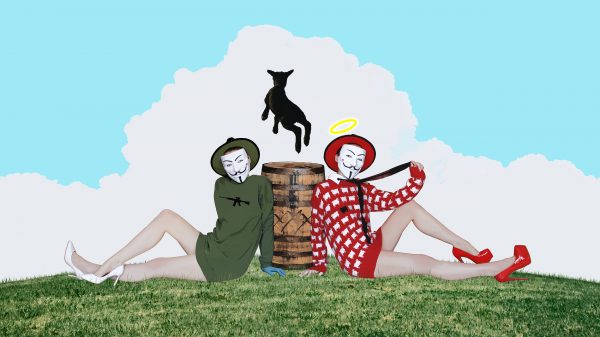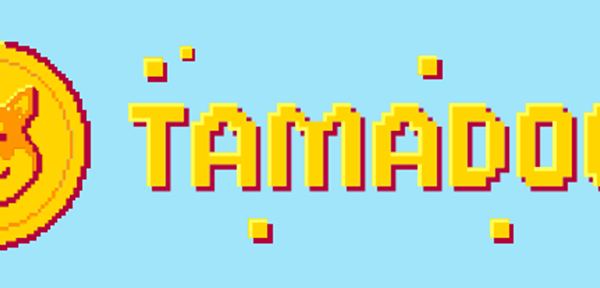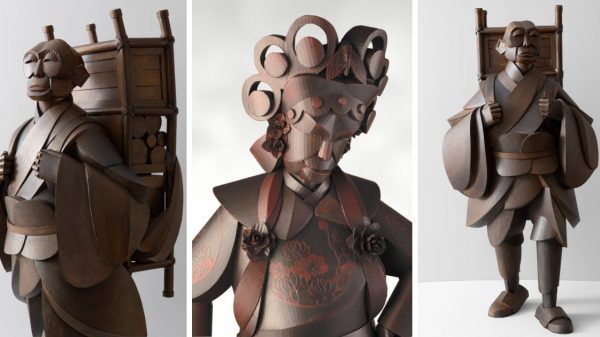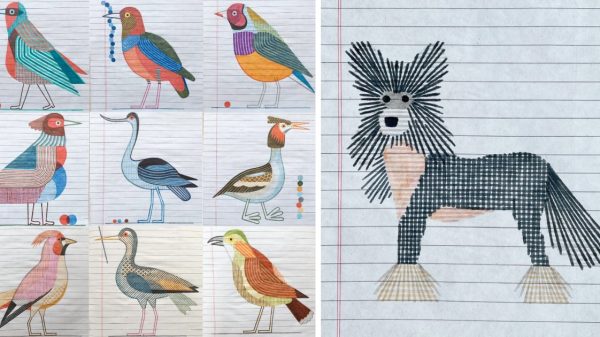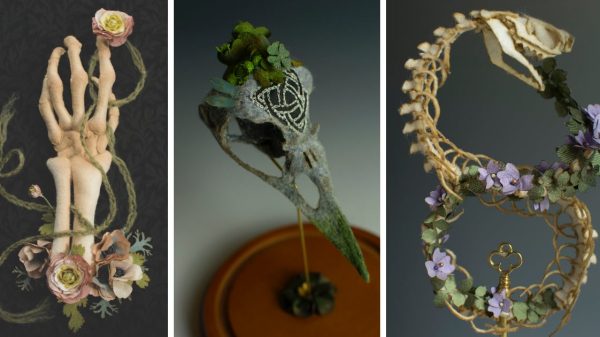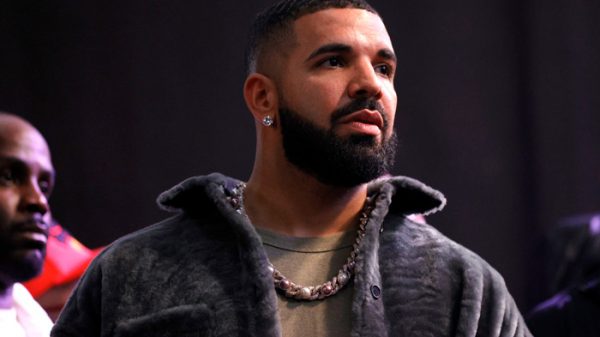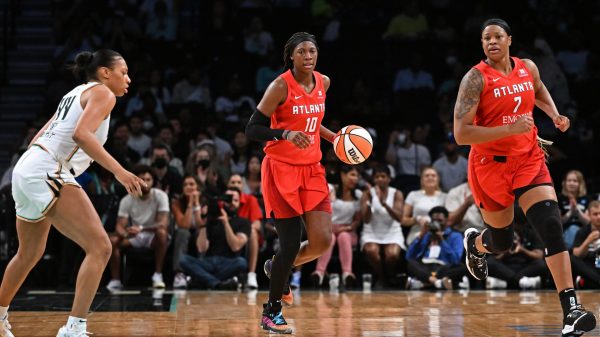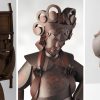Article from: Art News
REFLECTING ON HIS EVOLUTION as an artist, Pablo Picasso is reported to have said that he spent “a lifetime” trying to learn to paint like a child. Though an obvious exaggeration, the quote gets to the heart of modernism’s admiration of children’s art. As art historians like Jonathan Fineberg have observed, Picasso was not alone in seeking to emulate children’s creativity. In the first decades of the twentieth century, a host of European artists in search of new modes of expression looked to children’s drawings for inspiration and guidance, believing that art made by the young was purer and more “primitive” than images mediated through adult perception and dulled by social convention and artifice.
In children’s looping scrawls and lopsided figuration, in their dreamlike colors and disorderly narration, painters like Picasso, as well as Natalia Goncharova, Paul Klee, Wassily Kandinsky, Henri Matisse, Jean Dubuffet, and Joan Miró found a fundamentally different way of envisioning and depicting the world around them. Seeing with the eyes of a child—rediscovering childlike imagination and facture—provided such artists with an antidote to the mechanization and rationalism of everyday life, offering what Fineberg describes as a “purgative for Western culture’s materialism and the rigor mortis of its cultural hierarchies.”
Avant-garde interest in the child as artist also led to an interest in the child as spectator. Affinities between the visual language of childhood and that of modern art, paired with the child’s supposed innocence and impressionability, made the young an attractive target audience for artists attempting to disseminate new ideas about art and politics. In addition to influencing the development of European modernism, children were some of its first consumers: The Soviet painters Aleksandr Deineka, El Lissitzky, and Vladimir Lebedev all made picture books for Soviet children as part of a broader effort to revolutionize mass communication, and with it, mass politics, in the wake of 1917. Artists associated with other reform-minded movements of the early 1900s—for example, the Vienna Secession and Bauhaus—also paid attention to children’s books, using them as venues to explore radical typography, layout, and pictorial representation. Such experiments had a lasting impact on the picture book, a genre that continues to entice visual artists and remains a forum for innovative graphic design.
The cover of Alice’s Adventures in Wonderland, illustrated by Yayoi Kusama.
Kusama’s black ink drawings for The Little Mermaid, made between 2004 and 2007 as part of her “Love Forever” series, translate Hans Christian Andersen’s tale of love, heartbreak, and transformation into the artist’s own formal vocabulary, rendering the sea from which the Little Mermaid makes her ill-fated rise a dark patchwork of jet-black circles and writhing lines. Kusama likewise inserts herself into Lewis Carroll’s story, this time directly, assuming Alice’s place as protagonist and depicting the journey initiated by her fall down the rabbit hole as a tour through major shapes and themes of her own youthful cosmology. Kusama claims the story, originally inspired by ten-year-old Alice Liddell in the 1860s, as her own, putting the artist in the position of the daydreaming child: “I, Kusama, am the modern Alice in Wonderland,” one page announces.
Careening over New York, Cassie takes possession of the city’s landmarks: the bridge is her gleaming “diamond necklace,” an ice cream factory, her personal dessert source. In one scene, as she approaches a towering union headquarters that her father is helping construct, she vows to fly directly over it so that she can seize it for her dad, barred from joining said union because of his race. Once her family owns the building, she explains, “it won’t matter if he’s in their old union, or whether he’s colored, or half-breed, or Indian as they say.” At the book’s close, Cassie helps her little brother, Be Be, learn to fly. “It’s easy,” she instructs, “all you need is somewhere to go that you can’t get to any other way.” It is the child, like the artist, who has the ability to see beyond the accepted order of the adult world, to imagine new pathways, to unravel old hierarchies.
Faith Ringgold: Woman on a Bridge #1 of 5: Tar Beach, 1988, acrylic paint, canvas, printed fabric, ink, and thread, 74⅝ by 68½ inches.
THE NOTION OF THE ARTIST as a visionary and rebel is the subtext of many artist biographies geared to school-age children—a genre that has exploded in the 2000s, as the stock list of any major museum gift shop will confirm. The Museum of Modern Art in New York has produced several such titles about artists in its collection, among them Jake Makes a World: Jacob Lawrence, An Artist in Harlem (2015); Sonia Delaunay: A Life of Color (2017); and Roots and Wings: How Shahzia Sikander Became an Artist (2021). These are joined by other biographies—including A Life Made by Hand: The Story of Ruth Asawa (2019); Ablaze with Color: A Story of Painter Alma Thomas (2022); A Boy Named Isamu: The Story of Isamu Noguchi (2021); and Cloth Lullaby: The Woven Life of Louise Bourgeois (2016)—released by a mix of mainstream presses and art book publishers. Amazon, the unfortunate yardstick of publishing trends, has its own category for “Children’s Art Biographies.”
Taking the form of embellished or fantastical anecdotes from the childhoods of famous artists, the books go beyond the suggestion that the artist and the child are bonded in their shared sense of imagination. In their characterization and plot, they propose that the professional artist has an inborn sense of creativity that exceeds the quality and scope of the “normal” child’s. In Barb Rosenstock and Mary GrandPré’s The Noisy Paintbox: The Colors and Sounds of Kandinsky’s Abstract Art (2014), for example, the boy Kandinsky is endowed with a synesthetic ability to hear and feel the throb of colors. When he opens his first paint box, strands of color pour out from it in a “magical sympathy” of light and noise that Vasya harnesses into an abstract composition. Shown his array of ecstatic shapes, his parents bristle, shipping him straight to art lessons so that he can “learn to draw houses and flowers just like everyone else.”
A spread from Dancing Through Fields of Color: The Story of Helen Frankenthaler.
The elegiac quality of child artist biographies is particularly striking in the case of Kandinsky. In contrast to the imagined Vasya, the real Kandinsky spent years collecting the art of children and worked fastidiously to reach his signature abstract style. As he wrote in the 1913 autobiographical essay “Reminiscences,” experiencing “painterly forms purely and abstractly” required “years of patient work, of strenuous thinking, of numerous careful efforts.” Notably absent from the Kandinsky biography is a vision of mutual exchange between the child and the artist. Once imagined as potential teachers of artists, children’s books about famous artists now primarily cast the young as their students, compelled to aspire to the artist’s superior inborn sense of creativity.
Even more ironically, other books in the museum retail-scape use works of modern art made in imperfect emulation of juvenile sketches as training materials in visual literacy. In Phaidon’s “First Concepts with Fine Artists” series of board books, children aged one to three are given instruction in basic subjects by some of modern art’s luminaries. In Blue & Other Colors with Henri Matisse (2016), babies and toddlers can learn to identify hues from a painter who, as the final page notes, had little interest in verisimilitude—once daring to make a “portrait of a woman with blue hair and a pink, yellow, and green face!” Birds & Other Animals with Pablo Picasso (2017) aims to help children of the same ages begin identifying creatures through a series of Picasso’s highly abbreviated and simplified sketches. Small birds reduced to ovals with beaks and stick legs look more like marshmallow peeps than living birds; a flamingo, similarly, bears a closer resemblance to the lawn variety than the real thing.
Why show children photographs of a bird or drawings layered with details beyond their grasp when you can turn to avian creations by Picasso that convey the bird’s essence instead? The “First Concepts” series essentializes the special relationship between modern art and childhood, implying that the deliberately simple and irrational vocabulary of the former is legible to early learners. At the same time, it reinforces a hierarchy that prioritizes the artist as a more practiced and knowledgeable version of the child.
OVER THE PAST TWO DECADES, children’s drawings have made several notable appearances in major United States modern and contemporary art institutions. In 2006 Fineberg curated a show at the Phillips Collection and Krannert Art Museum that paired the childhood work of famous modern artists with examples of children’s art pulled from private collections. In 2020-21, artist Ulrike Müller and curator Amy Zion organized “The Conference of the Animals,” a two-part exhibition at the Queens Museum that featured a display of artwork made by children from 1900 to the present, in conjunction with a mural that takes its title from an eponymous 1940s German picture book. On the whole, though, art institutions appear reluctant to show work made by the young as, or alongside, fine art—the art of the child a genre that, as Fineberg has noted, receives far more attention from psychologists than art historians.
View of the exhibition “The Conference of the Animals,” 2020-21, at the Queens Museum of Art.
Children’s art helped make modern art, but it has also historically cast a shadow over its mainstream legitimacy. The aesthetic similarities between nonobjective art and the art of the child have long been exploited to justify skeptical and reactionary responses to works of abstraction, and later, conceptualism. Indeed, “my kid could make that” is by now such a hackneyed indictment of the Abstract Expressionist canvas or found-object artwork that it has spawned its own cottage industry of explainer books, articles, and online commentary.
To uphold the value of modern art in broader popular culture, it has been necessary to emphasize the humblebragging quality of the Picasso “lifetime” quote—to point out that, for truly talented artists, stooping to paint at the level of the child required decades of practice and patience. It has also been necessary to call into question just how close artists accused of immaturity actually came to embodying the child. There is no doubt that Duchamp’s urinal is pretty puerile, but as writer Susie Hodge responds in her 2012 book Why Your Five-Year-Old Could Not Have Done That: Modern Art Explained, its potty humor is too clever and effective to be mistaken for a middle-school prank. “No novice could have judged the right moment to intervene and chosen the best means to scandalize the public,” Hodge writes.
Similarly, that Cy Twombly’s canvases look like the meandering scribbles of a toddler belies the restraint and composure of a mature artist working according to a complex and rigorous system, as the late MoMA curator Kirk Varnedoe argued in a 1994 essay titled “Your Kid Could Not Do This, and Other Reflections on Cy Twombly.” “One could say that any child could make a drawing like Twombly,” Varnedoe writes, “only in the same sense that any fool with a hammer could fragment sculptures as Rodin did, or any house painter could spatter paint as well as Pollock.”
As one of the closing pages of the 2004 picture book Action Jackson notes, describing Pollock’s Lavender Mist (1950), there should be no question as to Pollock’s singular talent: “Some people will be shocked when they see what he has created. Some angry. Some confused. Some excited. Some filled with a happiness they cannot contain. But everyone will agree—Jackson Pollock is doing something original, painting in a way no one has ever seen before.”
This article appears under the title “Kid Stuff” in the June/July 2022 issue, pp. 56–61.
source
Article from: Art News


